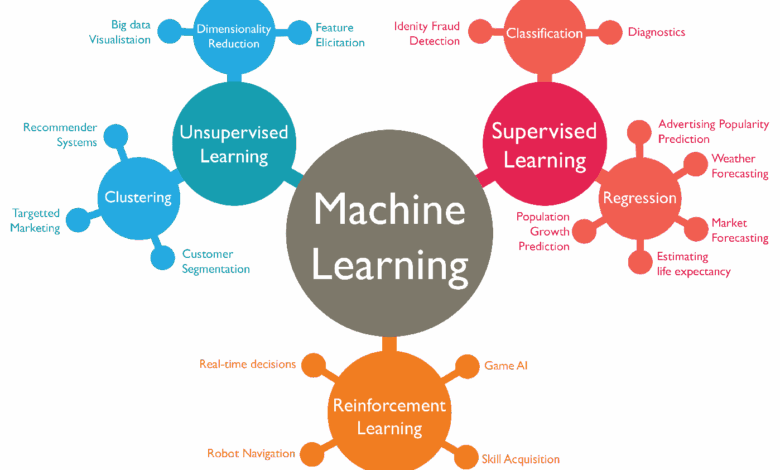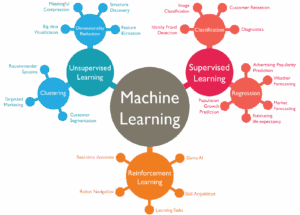Machine Learning Basics: Unlocking AI Potential

Understanding the Basics of Machine Learning
# Understanding the Basics of Machine Learning
Machine learning is transforming the way we interact with technology every day. From personalized recommendations to voice assistants, it’s all around us. But what exactly is machine learning, and how does it work? In this article, we’ll break down the basics of machine learning, explore its relationship with data science, and delve into its applications in data mining.
At its core, machine learning is a method of data analysis that automates analytical model building. It is a branch of artificial intelligence (AI) based on the idea that systems can learn from data, identify patterns, and make decisions with minimal human intervention.
Machine learning is all about using algorithms to parse data, learn from it, and then make a determination or prediction about something in the world.
How Machine Learning Works
Machine learning involves feeding data into a machine learning algorithm, which then generates a model. This model can make predictions or decisions without being explicitly programmed to perform the task.
Types of Machine Learning
There are three main types of machine learning:
- Supervised Learning: This is the most common type of machine learning. It involves training a model on a labeled dataset, which means that each training example is paired with an output label. The model learns to predict the output from the input data. An example of supervised learning is email filtering, where emails are labeled as ‘spam’ or ‘not spam’.
- Unsupervised Learning: In this approach, the model is trained on data that does not have labeled responses. It tries to learn the patterns and the structure from the data. A common use case for unsupervised learning is clustering, where data is grouped into clusters based on similarities.
- Reinforcement Learning: This type involves training a model to make a sequence of decisions by rewarding it for good decisions and penalizing it for bad ones. It’s often used in gaming and robotics.
The Role of Data Science in Machine Learning
Data science is a multidisciplinary field that uses scientific methods, processes, algorithms, and systems to extract knowledge and insights from data. Machine learning is a critical component of data science.
How They Work Together
Data science provides the framework and tools to handle and analyze large sets of data, while machine learning offers the techniques to make predictions and generate insights from this data. Together, they enable businesses to forecast trends, understand customer behavior, and improve decision-making.
Machine Learning and Data Mining
Data mining is the process of discovering patterns and knowledge from large amounts of data. The data sources can include databases, data warehouses, the internet, and other data repositories.
Machine Learning’s Role in Data Mining
Machine learning algorithms are often used in data mining to identify trends and patterns. For example, in retail, data mining can help analyze customer purchase data to identify buying patterns and improve inventory management.
Real-World Applications of Machine Learning
Machine learning is not just a theoretical concept; it’s being applied in many industries, making significant impacts.
Healthcare
In healthcare, machine learning is used to predict disease outbreaks, personalize treatment plans, and improve patient diagnosis accuracy. For example, machine learning algorithms can analyze medical images to identify anomalies that may indicate disease.
Finance
Machine learning plays a crucial role in the finance industry. It helps in fraud detection, risk management, and automated trading. Algorithms analyze transaction data to identify suspicious activities and alert authorities.
Marketing
In marketing, machine learning is used to personalize customer experiences. By analyzing customer data, businesses can offer personalized recommendations and promotions, ultimately increasing customer satisfaction and loyalty.
Transportation
Machine learning is at the heart of autonomous vehicles. It helps in object detection, path planning, and decision-making, enabling cars to navigate safely and efficiently.
Challenges in Machine Learning

Despite its advantages, machine learning has its challenges:
- Data Quality: The accuracy of a machine learning model is only as good as the data it is trained on. Poor quality data can lead to poor predictions.
- Complexity: Machine learning models can be complex and difficult to interpret, making it hard for users to understand how a decision was reached.
- Ethical Concerns: The use of machine learning raises ethical concerns, especially regarding privacy and bias. It’s important to ensure that data is used responsibly and that models do not perpetuate existing biases.
Conclusion
Machine learning is a powerful tool that is transforming industries and the way we live. By understanding its basics, we can better appreciate its applications and potential. Whether you’re a business owner looking to leverage data or a tech enthusiast curious about AI, machine learning offers exciting possibilities.
As machine learning continues to evolve, its impact on various sectors will only grow. Embracing these changes can lead to innovative solutions and opportunities for those ready to explore this dynamic field.

